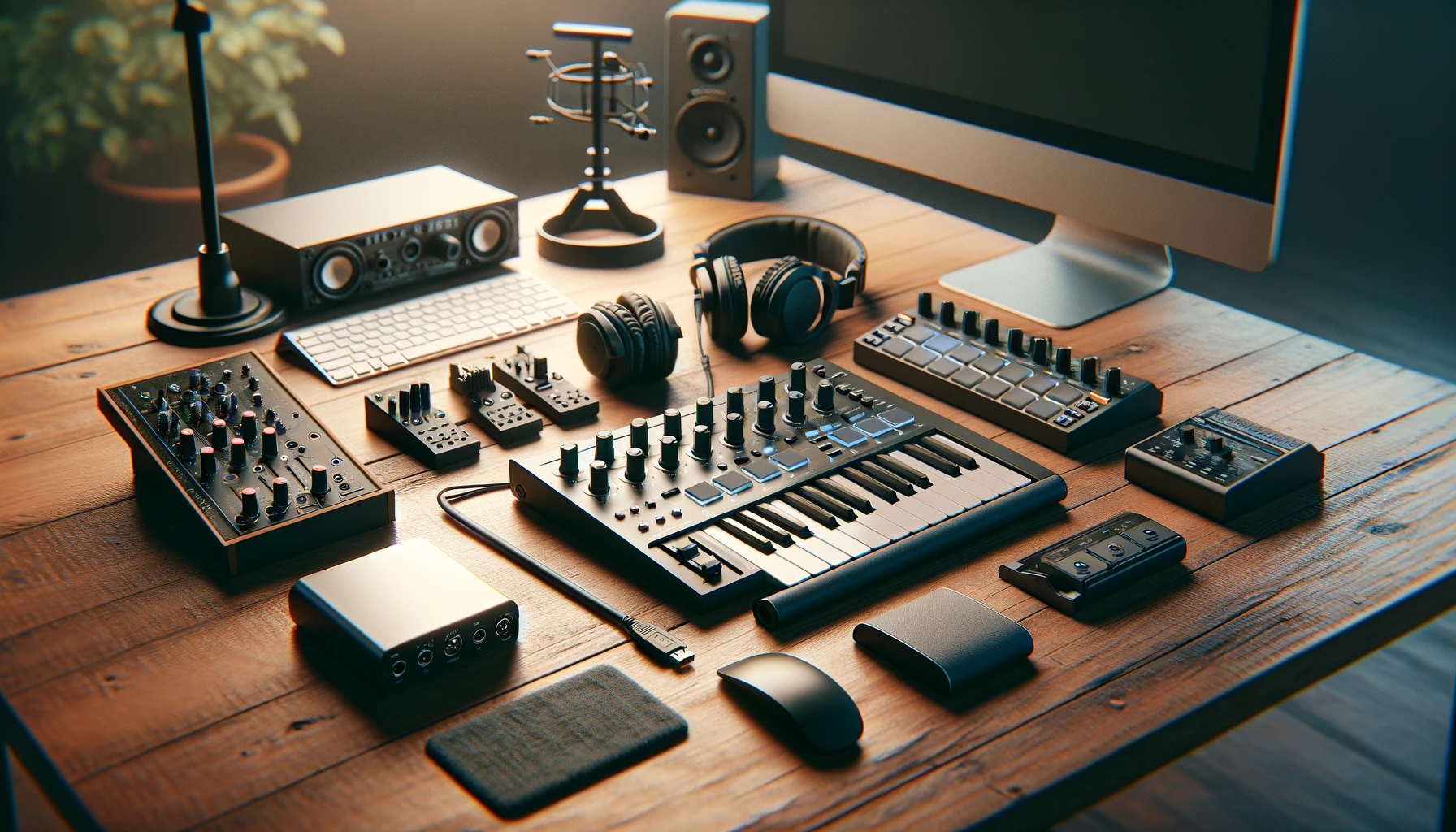As a producer starting out with a new MIDI keyboard controller, you may be wondering what accessories are absolutely essential to unlock its full potential.
While a MIDI controller keyboard can theoretically work right out of the box just connected directly to your computer, getting a few choice accessories makes a world of difference in usability and overall integration for music production.
From cables to stands and sustain pedals, let’s explore key accessories to fully outfit your MIDI controller experience.
What Accessories Do I Absolutely Need for My MIDI Controller?

The three accessories you absolutely need for a functional MIDI controller setup are:
- A USB cable to connect to your digital audio workstation (DAW)
- An audio interface to actually hear the sounds triggered by your playing
- Quality headphones or speakers to monitor the audio interface output
We’ll explore the specifics of these key accessories and additional useful options in more depth below.
But just having these three things allows you to start controlling virtual instruments with your MIDI keyboard and hear the results immediately to kickstart music-making.
Now let’s look closer at how to choose the best of each accessory type…
Cables to Connect the MIDI Controller
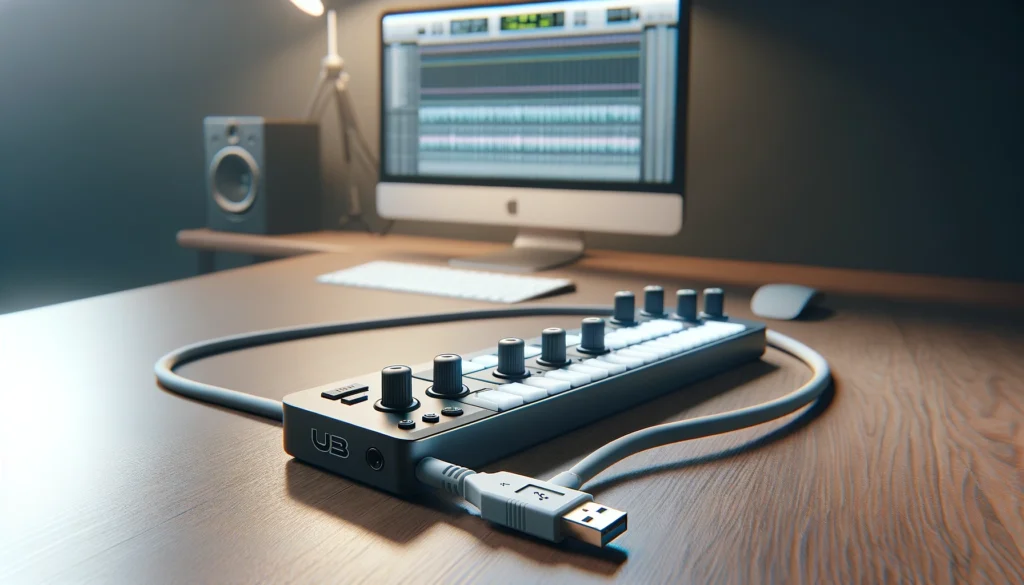
Getting the right cables is essential to connect your MIDI controller and get it communicating properly with your other music gear and software.
A MIDI controller will typically require at least a USB cable, and often MIDI cables as well.
A USB cable connects the MIDI controller directly to your computer, allowing it to send MIDI data to music production software and virtual instruments on your computer.
Most MIDI controllers today have USB connectivity, but always check the specific model to confirm.
The most common options are USB-A to USB-B cables, or sometimes a USB-C cable if your controller has a USB-C port.
You want to get a high quality, well-shielded USB cable between 6 to 10 feet in length.
This allows you flexibility in setup positioning without degradation of the MIDI signal.
In addition to USB connectivity, most full-size MIDI keyboards also have traditional 5-pin MIDI ports (MIDI In/Out).
This allows you to connect MIDI cables from your keyboard to external MIDI devices like hardware synthesizers, drum machines, and other sound modules.
Then you can play those devices directly from the MIDI controller keyboard.
Standard MIDI cables are cheap and widely available from any music equipment retailer.
Always check how many MIDI ports your controller has though, as some models may only have a single MIDI out.
With multiple ports, you can daisy chain multiple external MIDI devices.
Finally, if your MIDI controller keyboard does not support bus power over USB, you will need a power supply cable.
This usually comes included with the device, but if not, check the keyboard technical specifications for the appropriate power supply adapter.
The cable connects from the AC power adapter to the keyboard to deliver consistent, noise-free power for the best performance.
Audio Interface

A vital accessory for getting sound out of your MIDI controller setup is an audio interface.
The main job of a MIDI controller keyboard is to generate MIDI data that controls sounds generated from external sound sources – software instruments in your digital audio workstation (DAW) or external hardware synthesizers/drum machines.
The MIDI controller itself does not actually produce sound directly.
So that MIDI data needs to route to an audio interface connected to your computer, which will translate that data into actual audio that can then output to speakers, headphones, or an external sound system.
This is an essential step if you want to actually hear the sounds triggered by playing notes on the MIDI controller.
Most audio interfaces designed for music production connect to your computer via USB, providing both MIDI and audio capabilities in one device.
They allow easy connection of 1/4” instrument cables or XLR cables from external hardware synths, guitars, microphones, and more.
Those incoming signals get converted to digital and sent to the computer.
Then the interface’s headphone/speaker outputs let you listen to the sounds from your computer playback.
Higher quality interfaces offer multiple inputs with high resolution analog-to-digital conversion, ultra low-latency monitoring, and pristine preamps to cleanly capture audio signals.
All of this results in clear, detailed sound.
So while a basic low budget interface can work, it’s worth investing in the best quality audio interface you can afford.
Pay attention to the particular connectivity you need as well based on gear and how you intend to record and monitor sounds.
Stand
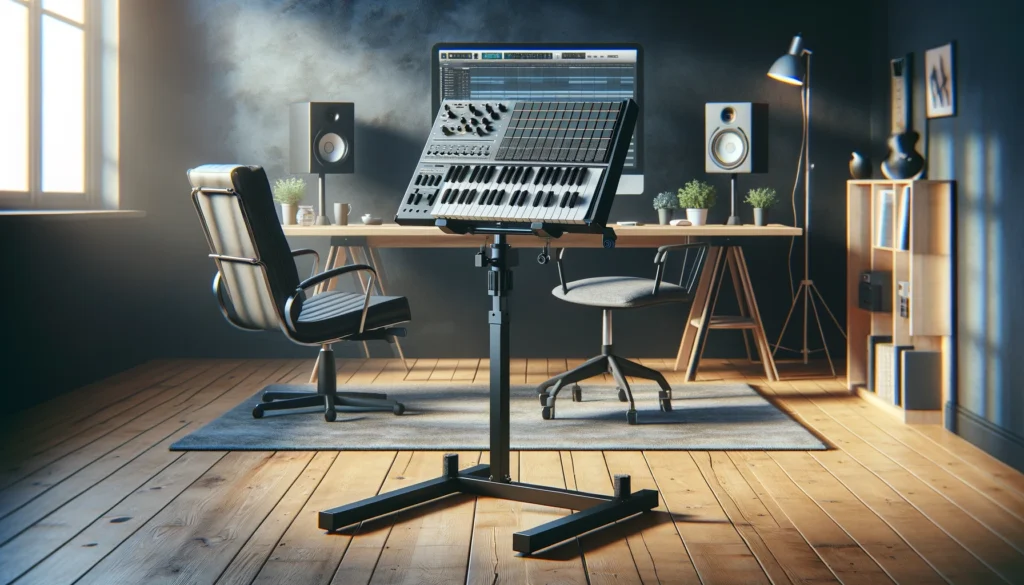
A dedicated keyboard stand provides proper positioning, support, and adjustability for your MIDI controller while playing.
It allows you to orient the keyboard at the ideal angle and height to maximize playing comfort, accuracy, and general feel.
While a basic folding keyboard stand or tabletop placement could work, having a dedicated, robust keyboard stand offers major benefits.
The most versatile option is an X-style stand with separate tiers.
These provide sturdy support and great flexibility.
You can adjust both the angle and height of the keyboard independently.
Most X-stands collapse down nicely for transport to gigs or band practice.
They accommodate everything from 25-key mini controllers up to full 88-key digital pianos with minimal footprint.
Sturdy steel construction and heavy duty padding prevents slippage and potential damage.
For full-size MIDI keyboards, two tier Z-style stands also work very well.
The upper and lower tiers mean you can position the MIDI keyboard at the optimum playing height.
While not as adjustable as an X-stand, the keyboard support bars on Z-stands help greatly with stability during enthusiastic playing.
The front bottom bar also allows you a nice spot to mount sustain/expression pedals.
As with X-stands, there are quality options that both collapse for portability, yet offer steel reinforcements for maximum stability and safety.
Sustain Pedal
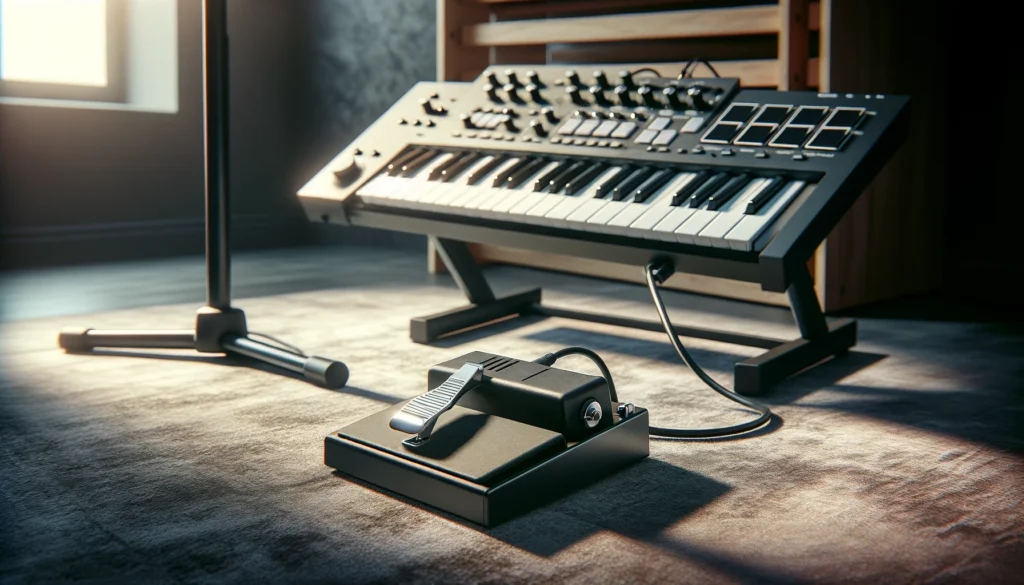
A sustain or damper pedal is an extremely useful accessory for most MIDI keyboard controllers.
This foot pedal allows you to replicate the sustain effect of an acoustic piano or electric piano.
When pressed, the pedal sends MIDI continuous controller data to sustain any currently held notes.
Releasing the pedal gradually fades held notes to silence.
This effect is essential for achieving proper legato, staccato, adagio playing technique on a keyboard.
The most common option is a single piano-style sustain pedal.
This looks and functions similar to the sustain pedal on an acoustic piano.
It’s the cheapest option but works well for basic sustain needs.
Pay attention to the build construction though – you want a sturdy base and cable that can withstand stomping.
For more advanced playing, consider a half-dampening pedal.
This allows you to sustain notes while still allowing dampened control of attack similar to “lifting” the sustain on a grand piano.
Finally, some dedicated digital piano-focused MIDI controllers additionally support triple foot pedal units.
As on high-end stage pianos, this gives separate functionality for sustain, soft pedal/una corda, and sostenuto pedals.
The soft pedal reduces the volume/voicing dynamically.
Sostenuto sustains only specific notes allowing staccato playing on others.
Check your particular MIDI keyboard though, as only some support sending the MIDI data for these additional foot pedal effects.
Headphones
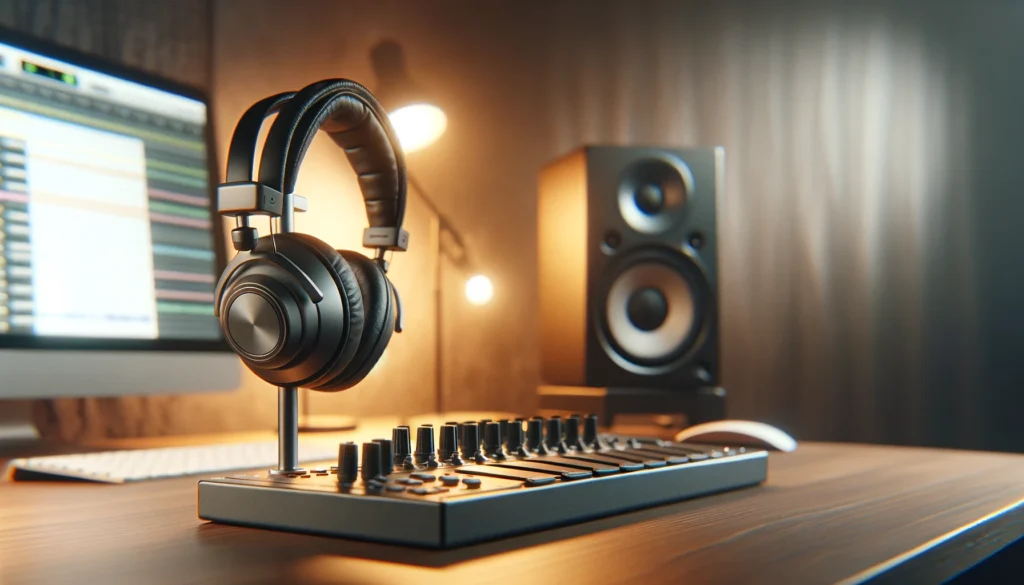
Quality headphones are vital accessories for practice, rehearsal, portable use, or basic sound monitoring with your MIDI controller setup.
While dedicated monitor speakers work fantastic in a studio setting for mixing and mastering work, headphones provide essential sound isolation for musical practice.
Closed-back over-the-ear headphones block out external ambient noises far more effectively than speakers can.
This allows you to focus directly on the discrete sounds from your MIDI keyboard playing without disturbing housemates.
For production or mixing work, look for relatively neutral sounding headphones with excellent sound reproduction in bass, mids and treble.
Models specifically designed for audio production provide a flatter equalization response to give you a transparent representation of your actual mix.
This avoids enhanced bass or scooped mids skewing your EQ decisions.
Closed back headphones with quality padded ear cups also prevent sound leakage bleeding out, avoiding distractions if others are nearby in close quarters.
Quality padding ensures the closed-back design can be worn for long periods without discomfort or fatigue as well.
Noise isolation goes both ways.
High quality over-ear headphone drivers also attenuate ambient noises, allowing you to better hear nuanced elements in your playing.
Perfect headphones for uninterrupted practice anywhere from your couch to airport lounges.
Accessory Bundle

All of the accessories described above certainly add up in cost when purchased individually.
So one of the most affordable options for outfitting your MIDI controller is to buy a keyboard accessory bundle.
These pre-packaged sets include all the basic add-ons like cables, pedals and stands to get fully up and running.
Bundles focused specifically around a particular MIDI keyboard model ensure compatibility for that keyboard’s unique connectivity or stand mounting.
This avoids any surprises trying to combine generic accessories that wind up not fitting correctly.
Brand-name MIDI controller companies like Native Instruments, Akai Professional and others offer accessory bundles tailored for their keyboard lineup.
Accessories like cables and pedals still meet professional quality standards.
Just verify what all comes included and that it meets your needs.
For producers on a budget, bundles can provide real savings over individual accessory purchases.
Conclusion
Getting set up with the right accessories transforms your MIDI controller from a standalone keyboard into a versatile music production workstation.
Investing in quality cables, audio interfaces, stands, pedals and headphones lets you integrate your controller into more advanced creative workflows.
While adding capabilities, accessories also maximize playing comfort for peak technique and performance.
Use this guide to accessorize your MIDI controller for empowered music-making success.
